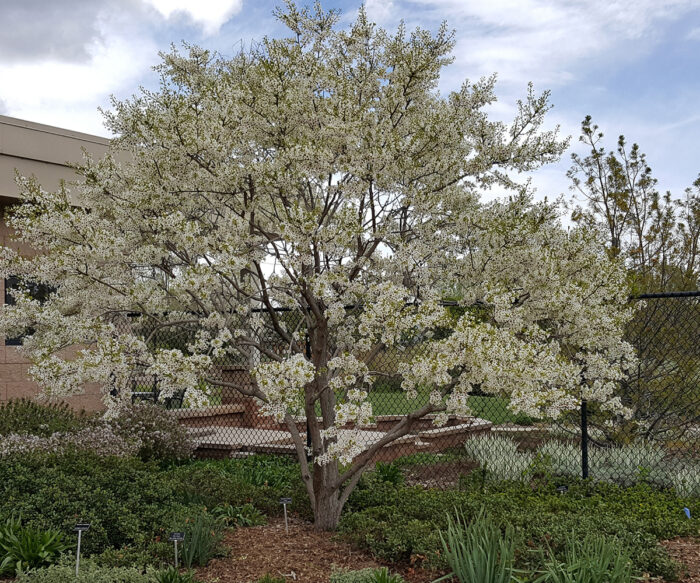
Who doesn’t love flowering trees? When blooming, they provide stunning focal points in the landscape. While crabapples (Malus spp. and cvs., Zones 4–8) and hawthorns (Crataegus spp. and cvs., Zones 3–9) are two of the most common spring-flowering trees in the Mountain West, there are some unique species that do well in our area and warrant your consideration. I hope you will give one of these beauties a try!
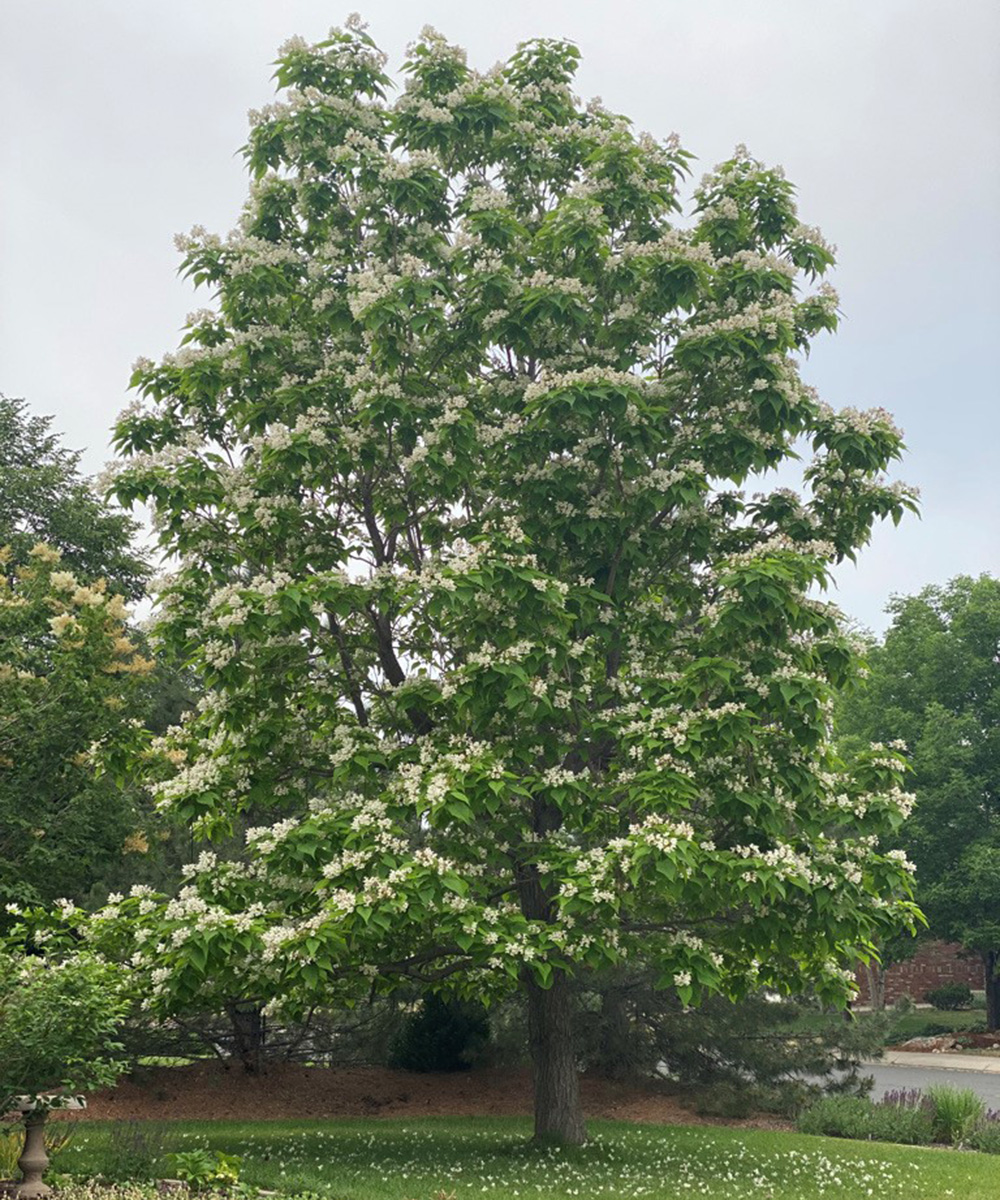
Northern catalpa
Catalpa speciosa
Zones: 4–8
Size: 40 to 60 feet tall and 20 to 40 feet wide
Conditions: Full sun; average to moist soil
Northern catalpa has become one of my favorite trees for providing shade. I have a beautiful specimen growing in my front yard. Catalpas have large, bright green, heart-shaped leaves. They are typically one of the latest trees to leaf out in our area, which is a good thing because those large leaves can hold a lot of wet snow in one of those late-season storms we are notorious for, and it would cause quite a bit of breakage if they grew their leaves earlier. But when catalpas bloom in late spring and early summer, they are show-stoppers! By June, they are covered in clusters of large, white, tubular, fragrant flowers, which upon closer inspection have slight purple and orange veining on the inside of the flowers. The blooms are followed by 10- to 20-inch-long beanlike pods that persist through winter. While the pods provide winter interest, they can be a bit of a pain to clean up in the spring, with some more falling off after every windstorm. While catalpas prefer moist soil, they can tolerate a wide range of different soil types.
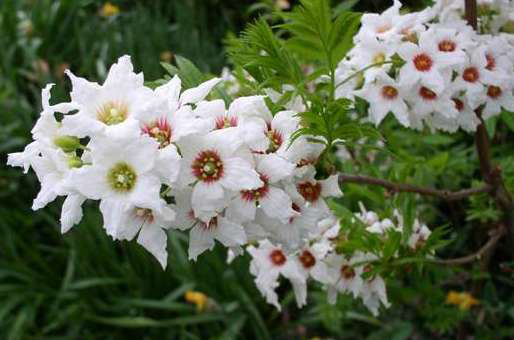
Clear Creek® golden yellowhorn
Xanthoceras sorbifolium ‘Psgan’
Zones: 5–8
Size: 18 to 22 feet tall and 10 to 15 feet wide
Conditions: Full sun; moderate to dry soil
Clear Creek® golden yellowhorn typically blooms in May, when it’s covered in clusters of white, star-shaped flowers with yellow eyes. Those yellow centers turn maroon as the flowers age. These blossoms are followed by large, interesting seedpods that persist through the winter. This plant can be trained into a small tree with a single trunk or allowed to grow in a large, multistemmed shrubby form. The bright green, pinnate leaves give Clear Creek® a ferny look throughout the season. This cultivar may be difficult to find, but it is bred by Plant Select® and you can look for retailers on their website. Needless to say, I like this tree so much that I added it to my garden. There are no major disease or pest issues, and minimal maintenance is required.
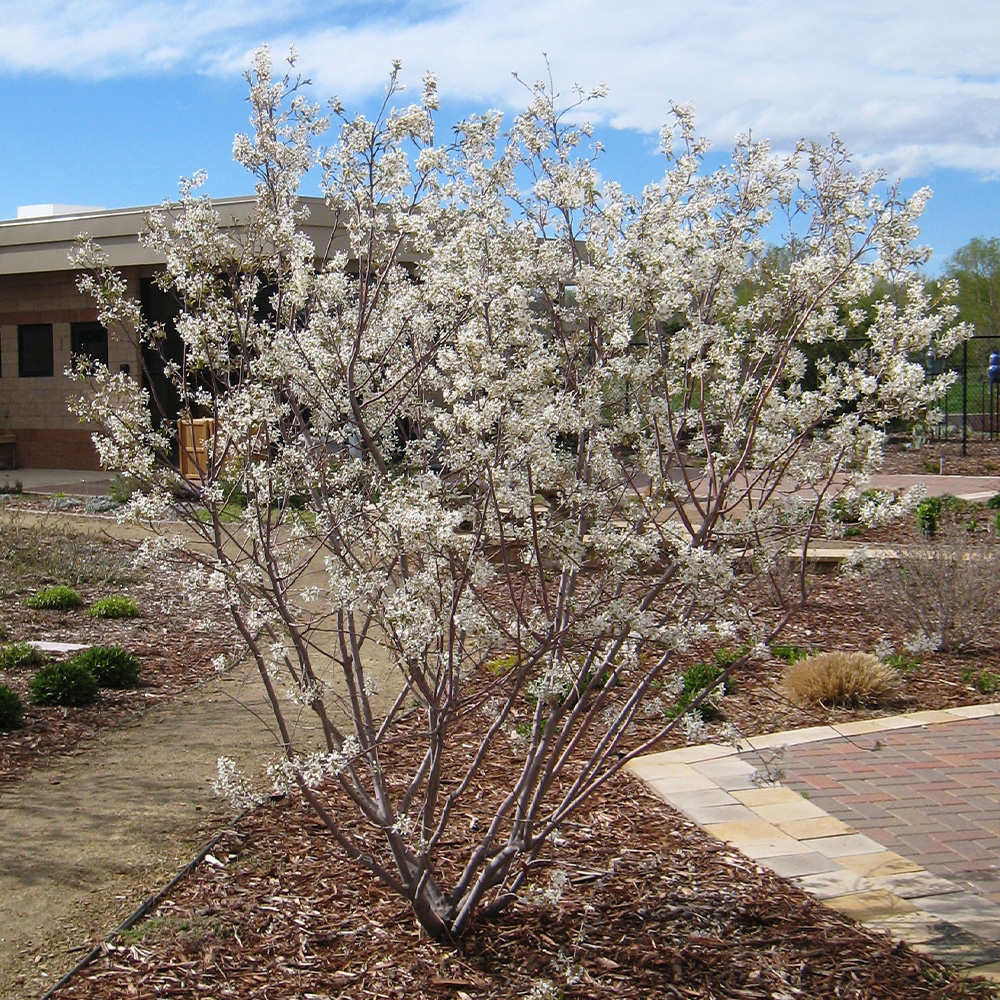
‘Autumn Brilliance’ serviceberry
Amelanchier × grandiflora ‘Autumn Brilliance’
Zones: 4–9
Size: 20 to 25 feet tall and 20 to 15 feet wide
Conditions: Full sun to partial shade; average, well-drained soil
‘Autumn Brilliance’ serviceberry provides interest all season long, starting with clusters of small, white, fragrant flowers that bloom in early spring. The blossoms are followed by edible purplish-black fruits that can be used to make jams and jellies—if you can beat the birds to them! As the name implies, the tree is well known for its orange-red fall color, which adds a bright spot to the autumn landscape. ‘Autumn Brilliance’ serviceberry can be grown as a single-stem tree or in a multistem form depending upon training and pruning.
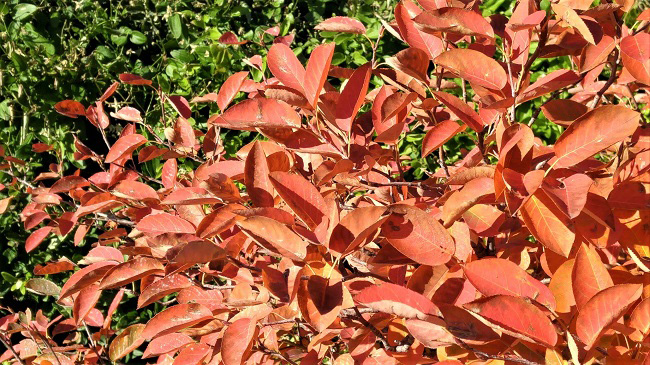
For more on spring-flowering trees, check out:
And for more Mountain West regional reports, click here.
—Michelle Provaznik is executive director of the Gardens on Spring Creek in Fort Collins, Colorado.


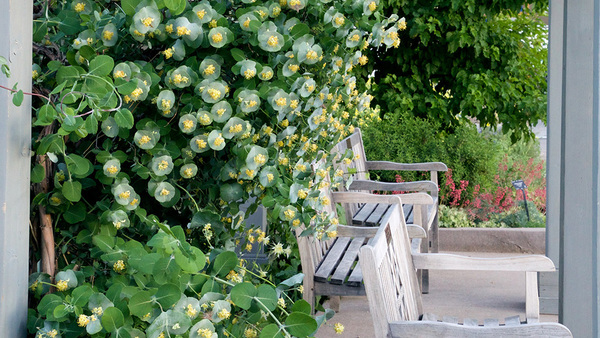

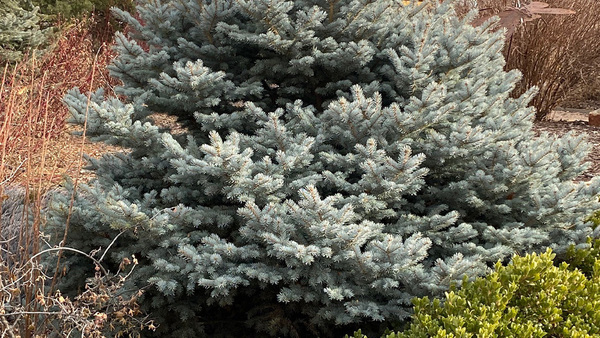













Comments
Log in or create an account to post a comment.
Sign up Log in